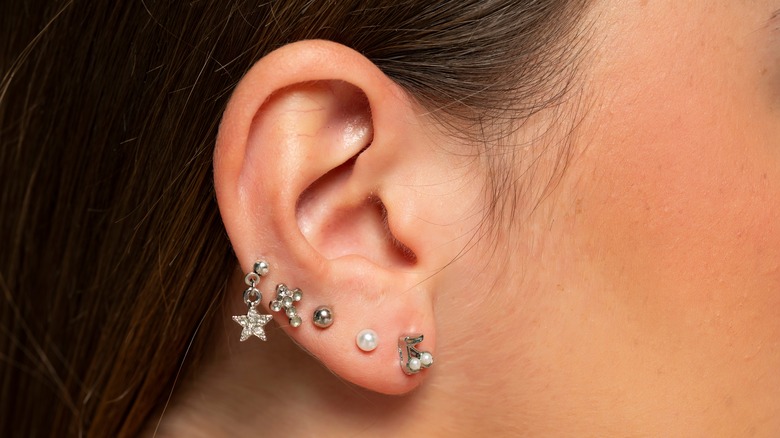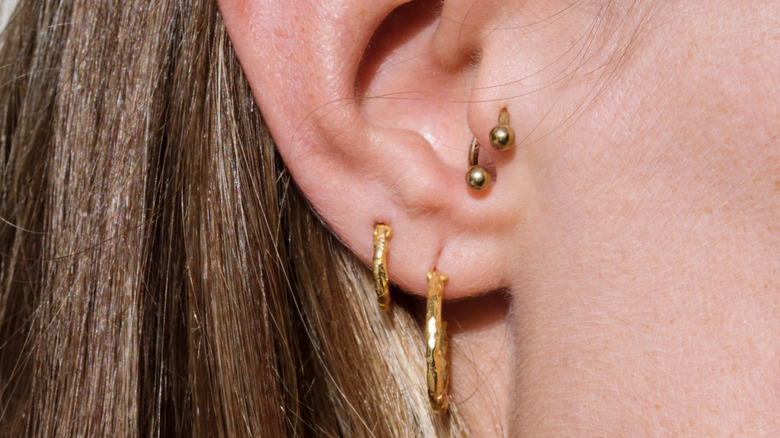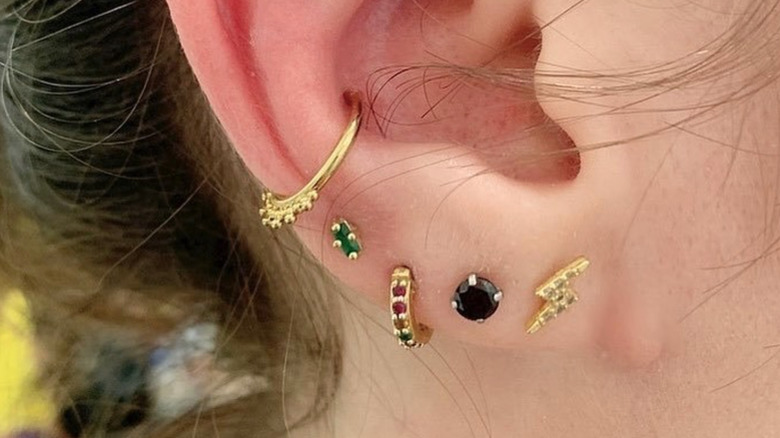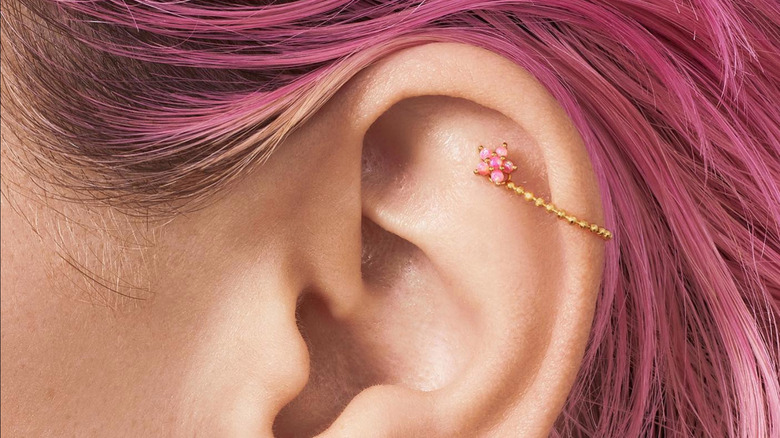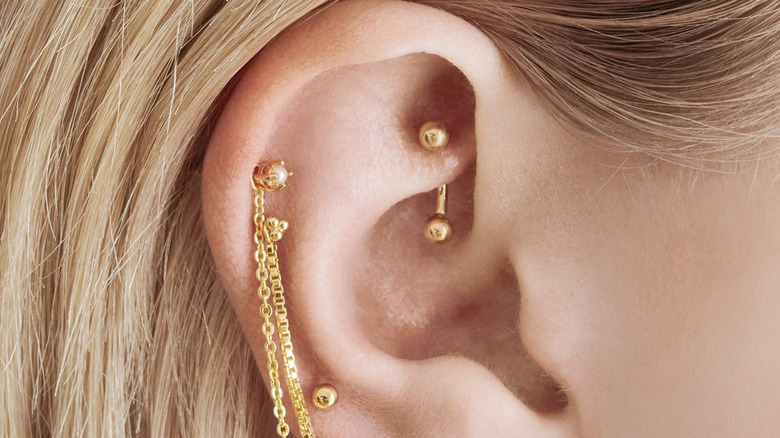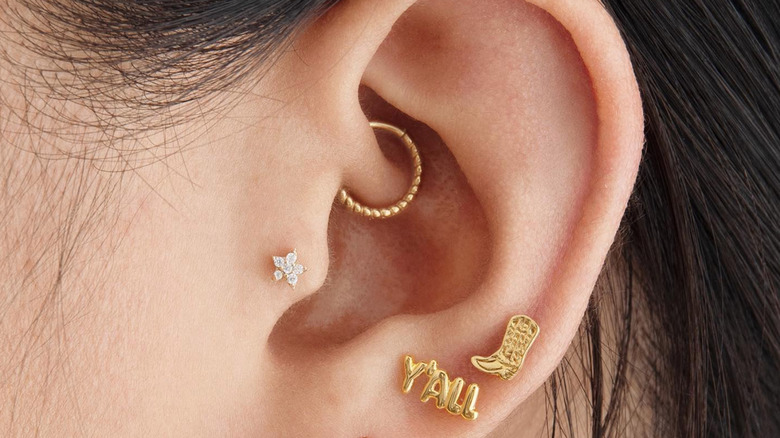Ear Piercings That Do Double Duty As Acupuncture Points
The ancient healing practice of acupuncture dates as far back as 3,000 years ago (via Global Advances in Health Medicine). Thanks to globalization, in the last 40 years, it has made its way into the western world, quickly becoming integrated into modern holistic medicine. Acupuncture works by activating points in the body connected to the central nervous system or meridians that create energy flow or qi (via John Hopkins Medicine). It's believed that acupuncture performed on the ear or auricular acupuncture can help to relieve some pains and illnesses because of the countless amounts of pluripotent cells in the ear that contain information from and represent other organs in the entire human body (via Hindawi). It works as a sort of reflexology system where stimulation of the different points in the ear directly affects corresponding anatomic parts of the body.
With the studded ear becoming more decorated and a favorite fashion accessory, the thought that piercings could double as energetic healing is the ideal two-in-one. So let's break down our favorite ear piercings that double as soothing acupuncture points.
The tragus for weightloss
It might be hard to believe, but acupuncturists say there is a small area in the ear that can control sugar cravings (via Impuria Jewelry). The tragus is the thick piece of flesh that covers the ear's opening and sits above the lobe. Once pushed on, it's believed that this tender piece of cartilage can suppress overactive appetites and even stress eating. Who knew that your ear might hold the key to a new weight loss journey? Because the tragus contains a considerable amount of cartilage, piercing the area feels slightly more painful than the ear lobe (via Healthline). However, you can expect the pain to dissipate pretty quickly.
The conch for chronic pain
The conch area is one of the most intimidating and painful areas to get pierced because of the massive plate of cartilage it holds (via Healthline). Named after the conch shell, the conch piercing is located in the inner bottom scoop of the ear. Once pierced, you can expect a burning sensation lasting from a few hours to a few days. Ironically, in acupuncture therapy, this area promises to heal chronic pain and can destress tension in high-strung individuals or those struggling with anxiety.
Helix for insomnia
If you find yourself lying awake at night, you might want to consider a helix piercing. Located at the top of the ear cartilage, there are two helix-piercing locations that provide acupuncture healing (via Centre of Wellness). The first is known as the forward helix, placed directly above the tragus, on the front forward-facing side of the ear. The other, known as the anti-helix or the "snug," is tucked under the cartilage of the ear. Both locations help with trouble sleeping and relaxing nerves (via Impuria Jewelry).
The rook for digestion
If you're willing to venture outside the lobe and cartilages of the ear, the little ridges of the ear can bring some surprising relief and alleviation to pain. The rook piercing is the cartilage flap located at the ear's uppermost ridge (via Healthline). Similar to the daith found below, it's a semi-painful piercing but offers incredible benefits. This acupuncture point offers digestion relief and even comfort for menstrual pains and cramps (via Centre of Wellness). Because of the amount of cartilage, this piercing takes longer than most to heal, but if you're willing to do the work, it can offer calm tummies and better digestion.
Daith for anxiety and depression
Right below the rook is its depression-curing sister, the daith. This funky piece of cartilage hangs out right above the tragus. It is believed in Chinese medicine to open gateways of energies providing energetic relief and healing to the body (via 2 Waves Beauty Bar). Because this area targets the vagus nerve, the longest nerve of its kind reaching from the brain, it's believed that applying pressure in this area can cure headaches, anxiety, and possibly even depression (via Healthline). This area does take comparatively long to heal and is not recommended for those on blood thinners, with autoimmune diseases, or with hemophilia.
